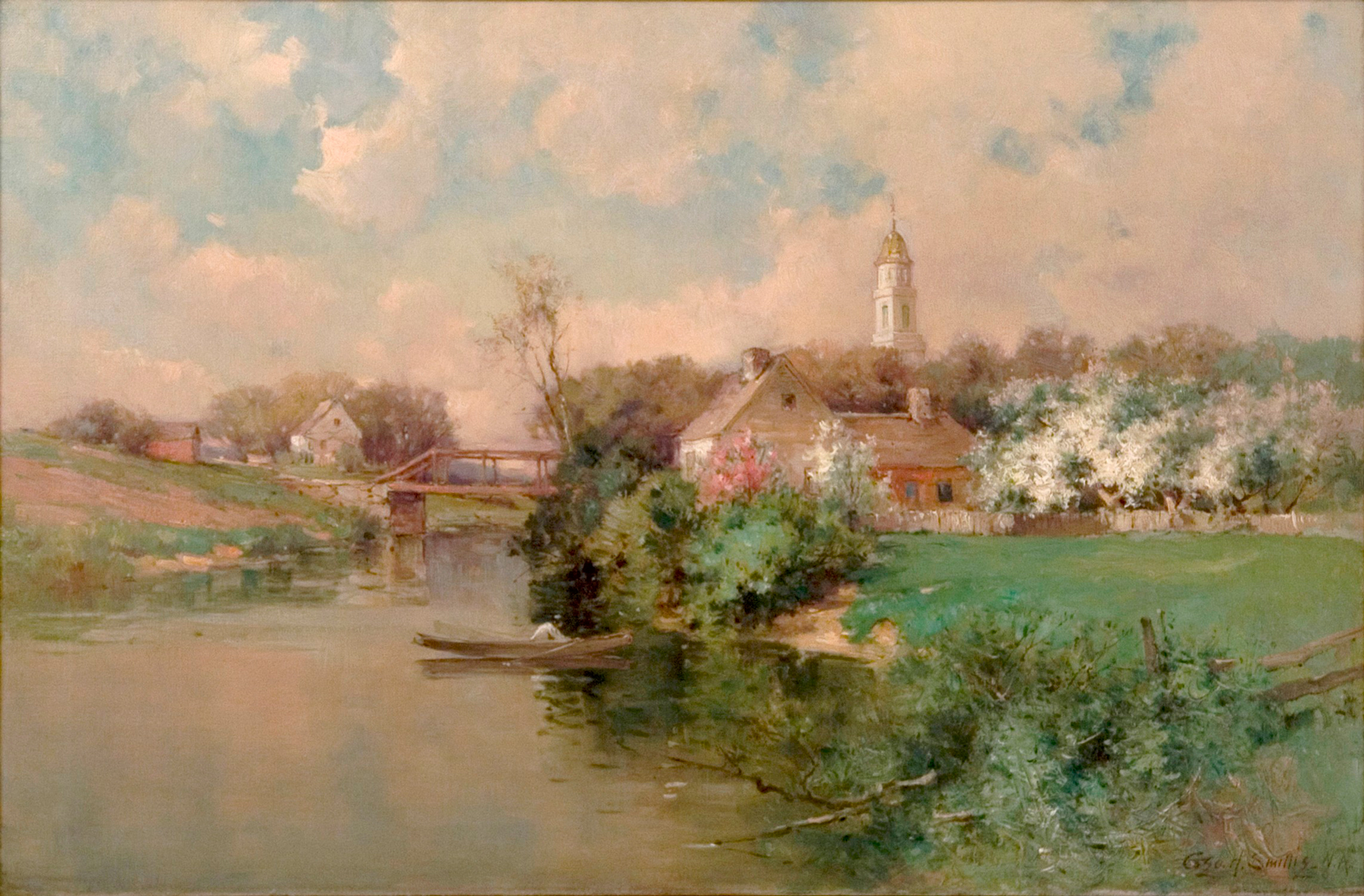George Henry Smillie
George Henry Smillie’s (1840-1921) artistic philosophy came through most in the advice he gave to aspiring painters: “Choose a simple subject and try to get all out of it you can.”
In the earlier part of his career, Smillie was often mentioned as an afterthought, overshadowed by his more famous father and brother, both of whom were known for their work engraving famous paintings. Smillie and his brother James did a lot together, one of the reasons it may have taken longer for Smillie to distinguish himself within his artistic family: they both studied art under their father, both occupied the same New York City studio, and both traveled west to find inspiration in Yosemite and the Rockies.
Smillie, though, would come into his own as a landscape painter — first drawing inspiration from the Hudson River School, then French Barbizon, and finally Impressionism. As one critic aptly noted: “He forms the rare exception of a conservative painter who still keeps pace with true progress.” His quiet dedication would eventually land him a post as secretary of the National Academy of Design, as well as a spot on the walls of the Metropolitan Museum of Art.
The deepest love Smillie harbored was for the Northeast scenes he returned to again and again: the Catskills, Adirondacks, and Hudson Valley; the coasts of Long Island and northern Massachusetts; and the ponds and fields around the Ridgefield, Connecticut home he came to occupy with his wife. He was especially acclaimed for choosing quieter atmospheres and, with a limited palette, imbuing them with unexpected vibrancy. “The scene is rather dreary,” one critic wrote, “and yet the artist endows it with a fascination which many a prettier composition does not possess.”
